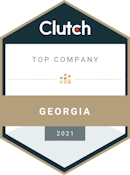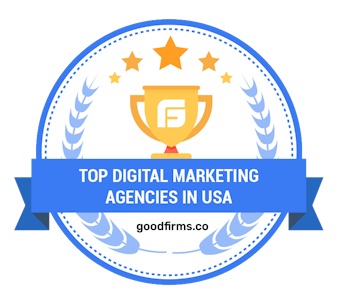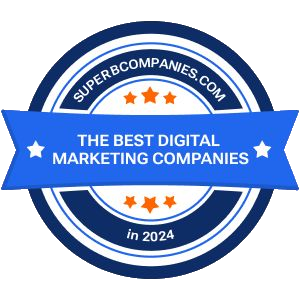Author: Heidi Schmidt, Digital Marketing Specialist
Competitive intelligence is one of the most important aspects of search engine optimization. Relying on Google’s public-facing comments and press releases to determine what factors to consider when optimizing a page is rather arbitrary and often not a reflection of what’s actually happening. Trusting the evidence straight from the source has a much more significant impact on improving ranking positions in any industry, and here’s why: if Google tells you they don’t factor in a certain element on a page or behind the scenes when they are determining who to position near the top, but the sites ranking near the top are all optimized for that factor, it is logical to consider this optimization strategy for your own site. Improving the technology, experience, and content of your page based on what you know ¹**Google wants to see is a much more valid and effective way to move the needle.
Ranking Factors & Weight
Some general categories to consider when reviewing competitors and optimizing a page include helpful content, search term optimization, E-E-A-T (experience, expertise, authority, and trustworthiness), backlinks, and site architecture & depth. I’m going to break down Google’s public intent, Google’s true behavior from an intel perspective, and my own personal experience with each of these categories.
Helpful Content
Google began rolling out the “helpful content” updates in August 2022, followed by a second iteration in December 2022. This one is serious, ya’ll. Copy on a page truly needs to be useful to readers and Google is getting better at recognizing this. Businesses generally want to provide useful products and services to their customers, so reflecting that same conviction in your internet presence should be a top priority since everything and everyone is digital nowadays. This factor holds a lot of weight, and it is evident in the results I have seen since 2022. Here are some things to consider when writing new content for a page:
- Don’t use AI. Artificial intelligence cannot tell a story and cannot represent your business for you. A real writer who takes the time to understand your business and brand is going to take you a lot further.
- Have someone else proofread and ask themselves, “Is this truly helpful? Does this sentence add value to content? Is the reader gaining knowledge from this?” If the answers are no, scrap it.
- Avoid fluff at all costs. No one wants to read nonsense filler content. This is the opposite of helpful. Users want the content they are reading to be digestible, and they should be able to easily pick out what they are looking for. Fluff makes this very difficult.
- Don’t treat the page like you’re writing a grad school paper with a minimum word count. Content depth should still be considered when comparing your page to competitors, but we’re talking about real depth rather than shallow words. If you’re making your point in a helpful way and still lacking the word count you were aiming for, it may be ready to publish, or you can consider other subtopics to add to the page that may also be helpful.
- Lengthy pages may benefit from a table of contents. Create jump links at the top of the page for each section so users can easily jump to the information they’re looking for.
- Provide insight into who you are, why you’re great, what you’re offering, and how it is beneficial. Consider focus groups to gather information about what your customers think are the best features of your product/service/business and what questions they have thought to ask before for your FAQ section.
- Link to internal sources on your site for users who want to dive deeper into each topic (and so Google sees the contextual relevance between pages and topics).
- Avoid duplicate copy. If you have similar pages across your site (for example, service area pages), make sure the copy is unique on each page. You can cover the same content, if it’s helpful, but the copy needs to be exclusive to that page. (It used to be acceptable to have the same copy across similar pages with some unique copy near the top, but this has proven to be an inadvisable strategy in SEO since the helpful content updates in 2022).
- Write the content to be helpful first, and optimize second.
Search Term Optimization
Do your research. Pick a keyword. Find the close variants. Focus on these search terms for your page optimizations. Each page should focus on a singular target term, ideally the most important and descriptive term for your product or service that has the most substantial search volume. Including close variants of the target term will help support the optimization. As mentioned in the helpful content section, you’ll optimize for these keywords after the content you’ve developed is helpful and finalized. It is much easier to avoid over-optimization by sprinkling in the intent at the end, rather than focusing on the keyword intent throughout the writing process. There are at least 20 specific keyword elements and placements to look for in your competitive analysis (meta data, headings, frequency, structured data, image alt tags, font enhancements, etc.). Search term optimization generally holds significant weight in ranking factors, but the sub-components vary in importance.
E-E-A-T (Experience, Expertise, Authoritativeness, Trustworthiness)
This category overlaps with helpful content in some ways, but I like to consider it as a separate value item with its own optimization components. Google claims this doesn’t impact direct ranking signals, but competitive intelligence often suggests otherwise. These principles describe Google’s definition of a quality page or website and help ensure you are relevant according to their algorithms. Experience may be represented by testimonials about your service or product. Expertise can be represented with a direct quote from an expert on the topic. Authority is going to be achieved with helpful content (your page will become a knowledge base for the topic if it is truly helpful to users). Trustworthiness has many factors such as current information, site security certificates, backlinks from other trusted sources, and [debatably] quantifiable user experience.
Backlinks
Backlinks are one of the more valuable elements and arguably the most labor intensive, time consuming, and difficult achievements in SEO. If you want Google to trust your website, you need to have links from other ²**websites Google already trusts. Here are some factors to consider for a healthy backlink acquisition strategy:
- Find valuable opportunities (yes, this means researching the web for sources that Google already finds helpful on the topic, which is time consuming).
- Use search operators to focus on blogs, articles, and resource pages.
- Do your research to acquire email addresses of the website editors or authors of the article.
- Personally reach out to the contacts for each article with a compelling offer.
- When someone engages positively, try to ensure there is additional content added to the article surrounding the backlink.
- Add value to the article by complementing the existing content with contextual relevance and expert knowledge.
Be consistent with your strategy. Find permanent, dofollow links from websites with trust and a strong domain presence. Create a plan for outreach and stick to it. Schedule article research for various topics to find links for all your important pages. Avoid PBNs (personal blog networks) and do not purchase bulk backlinks. PBNs & bulk backlinks may seem helpful in the short term, but will ultimately cause more harm than good.
Site Architecture & Depth
Depending on your business, this category can hold some weight in your ranking ability. Regardless of the industry, you want to make sure the architecture of your website makes sense and is organized so Google can follow the structure. The depth of your content and pages will play a role in this if your pillar offerings allow for subtopic pages or sub-offerings. Service area and location pages can also contribute to the depth of the site and how Google perceives the framework.
Up Next In The Competitive Intelligence In SEO Series
The summary of these factors and general weight on rankings is an abbreviated version of the first part of the insight and tools you need to properly execute competitive intelligence. Part 2 of this series will cover the process of identifying your competitive landscape, gathering your intelligence, and how to use the data from your findings.
- **Google is referenced throughout this article as the totality of the internet, the kit and caboodle, the final boss to defeat. Of course there are other players, but Google has set the standard for user consumption and providing content in an organized and reliable fashion worldwide. In 2023, Google still owned more than 91% of the search engine market share, followed by Bing (3.38%), Yandex (1.65%), Yahoo (1.12%), Baidu (0.96%), and DuckDuckGo (0.51%). Most, if not all, of these players are likely basing their logic and algorithms on Google’s standards and updates. When navigating this space, Google is your best bet on accuracy and traffic. If you’re ranking on Google and the other search engines are considering valid factors, too, you are likely ranking in those search engines as well.
- **Various SEO tools such as ahrefs, Moz, and SEMrush assign scores to domains to help you determine which sites Google trusts. These are third party tools so the scores don’t come from Google, but they have all proven to be reliable sources. None of these tools disclose how they calculate the scores, but generally speaking, they consider the number of referring dofollow backlinks, the number of referring domains, the number of domains from external links, and more. I personally prefer ahrefs, which provides a “domain rating” for websites.













.png)

